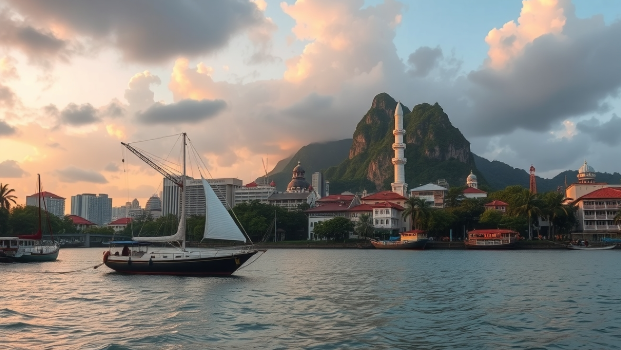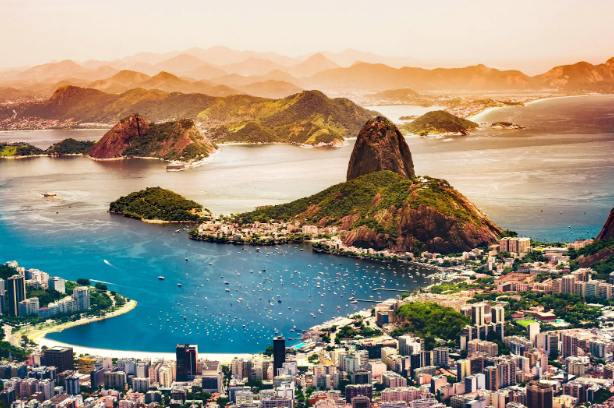Patagonia is one of the most beautiful and mysterious places in the world. Many travelers dream of visiting Patagonia because it is full of mountains, glaciers, lakes, and open lands that look untouched by time. Patagonia is located in the southern part of South America and is shared by two countries: Argentina and Chile. People who love hiking, nature, wildlife, and adventure often call Patagonia their dream destination.
In this article, we will explore the history, culture, nature, wildlife, travel tips, and best experiences in Patagonia. Whether you want to learn about its amazing landscapes or plan your own journey, this guide will give you a deep look at why Patagonia is so special.
Table of Contents
Where Is Patagonia Located
Patagonia is in the southernmost part of South America. The eastern side belongs to Argentina, while the western side belongs to Chile. It stretches across thousands of kilometers, from the Atlantic Ocean to the Pacific Ocean.
- The Argentine side is known for vast plains called pampas, big sheep farms, and the famous Andes mountains.
- The Chilean side is famous for fjords, ice fields, and some of the most dramatic mountain peaks in the world.
Patagonia also includes Tierra del Fuego, which means “Land of Fire,” a group of islands at the very bottom of South America. This region is so far south that it feels like the end of the world.
History of Patagonia
Patagonia has a long history that goes back thousands of years. Indigenous people such as the Tehuelche and Mapuche lived in the region long before Europeans arrived. They lived by hunting, fishing, and moving with the seasons.
In the 16th century, European explorers such as Ferdinand Magellan visited Patagonia. The name “Patagonia” is believed to come from Magellan, who called the local people “Patagones,” meaning “big feet,” because of the large animal-skin shoes they wore.
In the 19th century, many settlers came to Patagonia, especially from Europe. They brought sheep farming and established towns. Today, Patagonia is known for both its native heritage and European influence, making it a land rich in history and culture.
Landscapes and Natural Beauty
One of the biggest reasons people love Patagonia is its breathtaking landscapes. It is one of the last truly wild places on Earth.
- Mountains: The Andes mountain range runs through Patagonia, with famous peaks like Mount Fitz Roy and Cerro Torre.
- Glaciers: Glaciers such as Perito Moreno in Argentina and Grey Glacier in Chile attract thousands of visitors every year.
- National Parks: Torres del Paine in Chile and Los Glaciares in Argentina are world-famous for hiking and scenery.
- Lakes and Rivers: Clear blue lakes and fast-flowing rivers make the region a paradise for photographers.
Patagonia is often described as “raw nature,” where landscapes are powerful, dramatic, and untouched.
Wildlife of Patagonia
Patagonia is also home to unique animals and birds. Nature lovers often travel here to see wildlife in its natural environment.
- Guanacos: Wild relatives of llamas that roam the plains.
- Pumas: Also known as mountain lions or cougars, they are shy but live in the region.
- Andean Condor: One of the largest flying birds in the world, with wings that can stretch over 3 meters.
- Magellanic Penguins: Found along the coasts of Patagonia, especially in colonies near Punta Tombo, Argentina.
- Whales: In places like Puerto Madryn, travelers can see southern right whales close to shore.
The mix of land and sea wildlife makes Patagonia one of the best destinations for eco-tourism.
Adventure and Activities in Patagonia
Patagonia is not only about beauty, but also about adventure. Travelers come here to test themselves against the wild environment.
Some popular activities include:
- Hiking and Trekking: The W Trek in Torres del Paine is one of the most famous trails in the world.
- Climbing: Experienced climbers often try to climb Mount Fitz Roy or Cerro Torre.
- Kayaking: Lakes, rivers, and fjords make kayaking a memorable activity.
- Horseback Riding: Exploring the pampas on horseback is a traditional Patagonian experience.
- Glacier Tours: Walking on the Perito Moreno Glacier is a once-in-a-lifetime adventure.
Adventure seekers will never run out of things to do in Patagonia.
Patagonia’s Culture and People
The people of Patagonia are known for their hospitality and warmth. Life here is slower and more connected to nature.
- Many families work as sheep ranchers, producing wool that is sold around the world.
- Food in Patagonia often includes lamb, beef, and fresh seafood.
- Festivals and traditional music are part of life, influenced by both native and European cultures.
The culture of Patagonia is also shaped by its isolation. Towns are often far apart, so communities are close-knit and supportive of each other.
Patagonia’s Climate
The climate in Patagonia is unique and can be unpredictable. Travelers often say that you can experience “four seasons in a single day.”
- Summers (December to February) are warmer and best for outdoor activities.
- Winters (June to August) are very cold, especially in the mountains, and perfect for snow sports.
- The wind in Patagonia is very strong and often surprises visitors.
It’s important to pack layers of clothing and be ready for sudden changes in weather.
Traveling to Patagonia
Reaching Patagonia takes time, but the journey is worth it.
- Flights: Travelers often fly from Buenos Aires (Argentina) or Santiago (Chile) to cities like El Calafate, Ushuaia, or Punta Arenas.
- Buses: Long-distance buses connect towns and are a common way to travel inside Patagonia.
- Car Rentals: Renting a car gives travelers freedom to explore at their own pace.
While Patagonia is remote, it has enough infrastructure for tourism. Many towns offer hotels, hostels, and guided tours for visitors.
Best Places to Visit in Patagonia
Here are some must-see places for anyone traveling to Patagonia:
- Torres del Paine National Park (Chile) – Famous for its granite towers and trekking routes.
- Los Glaciares National Park (Argentina) – Home to the Perito Moreno Glacier and Mount Fitz Roy.
- Ushuaia (Argentina) – The southernmost city in the world, gateway to Antarctica.
- Bariloche (Argentina) – Known for its lakes, chocolate shops, and alpine-style town.
- Puerto Natales (Chile) – Starting point for Torres del Paine treks.
Each place offers a unique experience of Patagonia’s wild beauty.
Why Visit Patagonia
Patagonia is not just a destination—it’s an experience. Travelers come back with stories of amazing landscapes, wildlife encounters, and the feeling of being small in front of nature’s power.
For many, Patagonia is a place to disconnect from busy life and reconnect with nature. It is perfect for adventurers, photographers, hikers, and anyone looking for peace in the wild.
Conclusion
Patagonia is one of the last great natural frontiers of the world. With its glaciers, mountains, plains, and wildlife, it captures the imagination of everyone who visits. Whether you dream of trekking in Torres del Paine, seeing penguins on the coast, or simply enjoying the silence of nature, Patagonia has something for you.
It is not just a place to travel—it is a place to feel alive.
FAQs
Q1: What is the best time to visit Patagonia?
The best time is during the summer months (December to February) when the weather is warmer and days are longer.
Q2: Do I need a visa to visit Patagonia?
This depends on your nationality. Since Patagonia is in Argentina and Chile, check the visa requirements for those countries.
Q3: How many days do I need to explore Patagonia?
At least 7–10 days are recommended, but many travelers spend two to three weeks to fully enjoy the region.
Q4: Is Patagonia safe for travelers?
Yes, Patagonia is generally very safe. The main challenges are weather and distance between towns, so preparation is important.
Q5: Can I visit both Argentina and Chile sides of Patagonia in one trip?
Yes, many travelers cross between the two countries. Just remember to carry the necessary travel documents.





